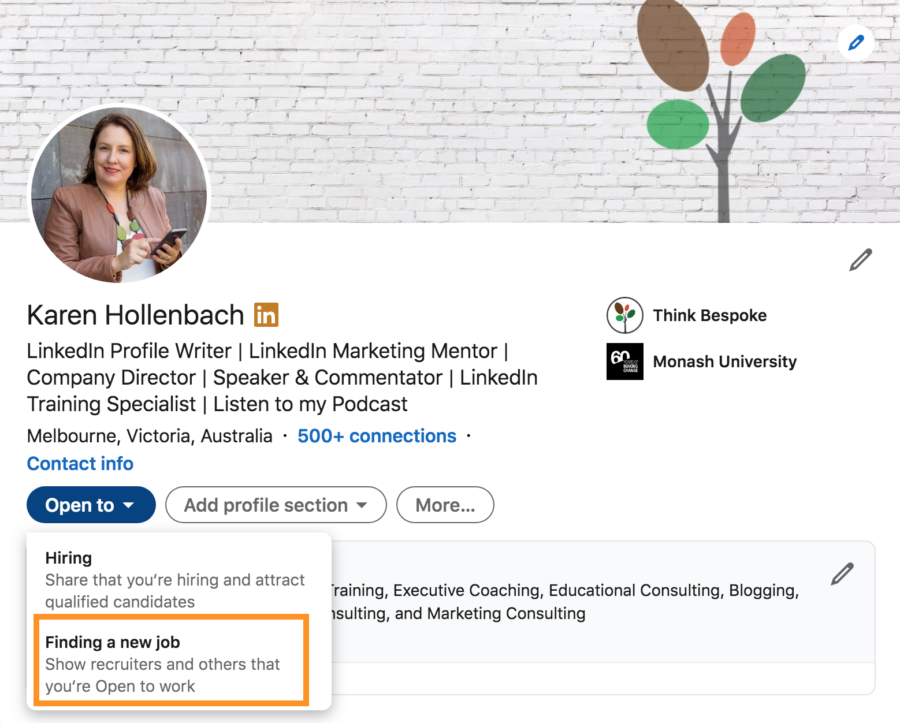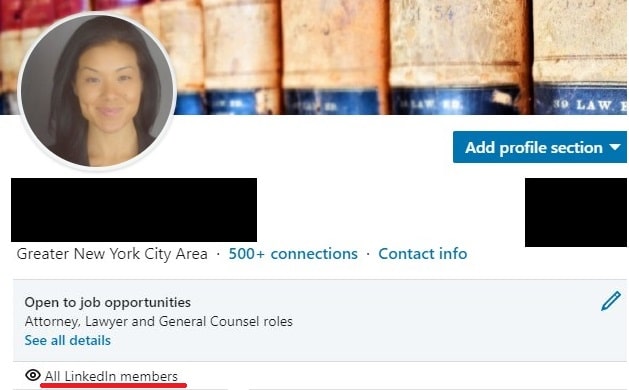

Keep your message short and sweetīrevity is one of the keys to a successful LinkedIn message - you need to keep it short and sweet! Check their LinkedIn profile to see if they’ve published any recent posts and do a quick Google search to see if their company has any recent news. Ideally you should try and mention the recipient’s first name, their company, or a particular project they were involved in. Including personal information in your subject line proves that you’re not sending a generic message. ” Mention the candidate’s name or personal achievements

Try something along the lines of: “It was great to meet you at in. Make sure you’re very specific with your reminder. Adding a quick reminder of who you are in the subject line can make all the difference. If you’ve met the candidate before, make sure you mention that.ĭon’t assume that they’ll remember you from your name alone.
#RECRUITERS OPEN LINKEDIN PRO#
Pro tip: Ask your shared connection for a direct introduction to the candidate. If you do, try mentioning your mutual acquaintance in the subject line to get the candidate to sit up and take notice. Use LinkedIn’s ‘How You’re Connected’ feature to see if you have any shared connections with a candidate. This is the gold standard for unsolicited messages.

Here are some tactics to help you write subject lines that get results: Mention any shared connections You need to make the most of it, and grab the candidate’s attention. If you’re sending an unsolicited, cold message, the subject line is even more important. Up to 35% of recipients will only open your message if the subject line resonates with them. The words you use here can have an enormous effect on open rates. When you sit down at your desk every morning and sift through your emails and LinkedIn messages, how do you decide which ones to open and which ones to delete? The subject line. Great messages start with great subject lines What are the tactics you need to start using to prevent candidates from ignoring your messages? 1. We need to use more advanced messaging techniques, and take the time to craft templates that at least seem personalized. Ironically, sometimes these messages are so untargeted that recruiters end up sending them to other recruiters! Most of them are just the same recycled template, and as a result, many great candidates have become completely desensitized to recruiters. Some top developers get hundreds of messages every week. The best candidates are literally swamped. There’s another important detail here too: around a third of candidates might be opening your messages, but the actual response rate is far lower. If you were unsuccessful almost two thirds of the time in any other business function, would your boss be happy? LinkedIn is essentially encouraging this mentality with the metrics that it highlights: The LinkedIn sales department will tell you that you’re hitting it out the park if you get a 38% InMail open rate. Some recruiters have developed the mindset that if they send enough messages, they’ll get results. This makes it difficult to avoid reducing candidate outreach to a numbers game. Any recruiter can bulk buy InMails and send messages to whomever they want. LinkedIn has democratized recruiting, and suddenly everyone is accessible. How many messages do you think top candidates get from recruiters every day?

“The people you want to reach the most are the ones who, by default, delete emails.” (Seth Godin)


 0 kommentar(er)
0 kommentar(er)
